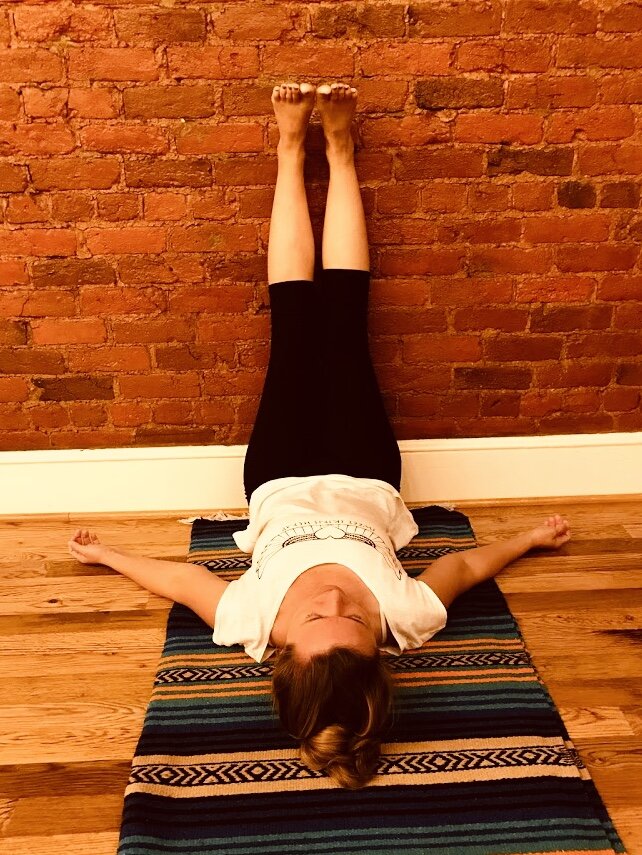Wall Caterpillar
Read the principles and benefits of Yin Yoga below before practicing.
Benefits:
Deeply relaxing and calming for the whole body
Increases circulation in the legs and feet
Stretches the hamstrings and low back
Reduces swollen legs and feet
Improves digestion
Affected meridians:
Urinary and bladder meridian.
How to get into the pose:
Sit sideways against the wall.
Swing your legs up the wall and lie down. Bring your sitting bones as close as possible to the wall.
You can put a small cushion under your sacrum. Your hands and arms out to your side, palms up. Keep the shoulders away from the ears.
Duration:
Hold the pose for 2 - 5 minutes.
How to come out of the pose:
Bend your knees and rest the soles of your feet against the wall for one minute. Turn to one side and slowly come out.
Props (using props during Yin practice helps you to be more comfortable in each pose):
Yoga mat.
Timer and soothing/relaxing music. You can also practice in silence.
Contraindications:
If you feel any sharp pain in this pose, come out
During Pregnancy
High blood pressure
Headache
...................................................................................................................................................................
What is Yin Yoga?
Yin Yoga has its roots in China, unlike the more popular and active yoga practices, that originated in India. It was founded on the Taoist theory of yin and yang – opposite concepts that, together, represent balance.
There are around 20 classic poses (plus their variations) in Yin Yoga. Yin postures are primarily passive in nature and mostly performed while seated or in a reclining position. Yin poses are held anywhere from two minutes to five minutes (or even more) in order to target the body’s connective tissues, joints, and fascia rather than muscles.
Yin Yoga Principles:
1. Find your comfortable edge in each pose, the place where you feel a sensation but not over-stretching, stabbing, or burning pain. Keep in mind that less is more.
2. Remain still while in each pose. Focus on your breath, relax the muscles, and let the stretch go deeper into the connective tissues.
3. Hold each pose for a long time (2- 5 minutes), letting yourself open into the posture. Use a timer.
4. Release each pose slowly and with care. Take your time when coming out of a pose - go nice and slow.
5. Rest for 1 minute in between each pose to feel the after-effects.
Benefits of Yin Yoga:
Physical level - targets bones, release fascia and improves joint mobility.
Emotional level - Yin Yoga is a quiet practice that is truly a meditative practice that calms the body and mind. Reduces anxiety and stress.
Energetic level - the practice reconnects with its roots of Taoist yoga and uses the ancient map of the Meridians. The long holds in Yin restore harmony in the subtle body by targeting the channels that run through the connective tissues. Improves the flow of chi or prana and balances internal organs.

